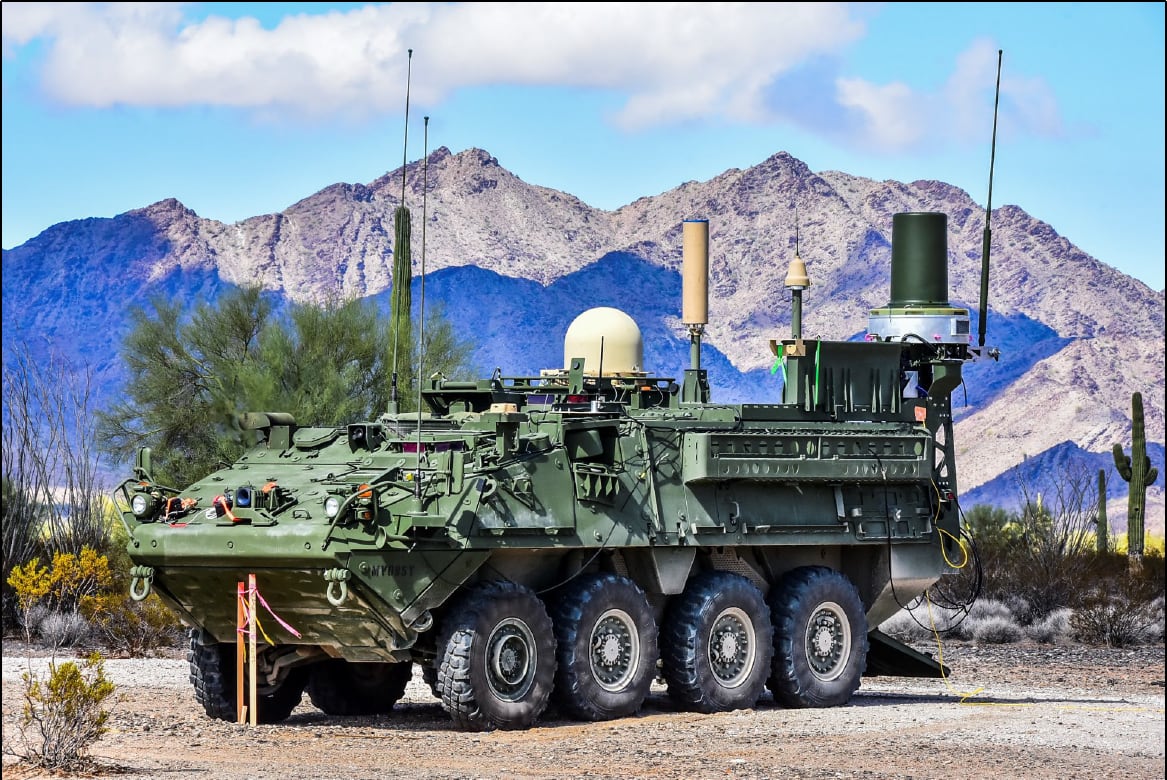Light infantry Army units in Europe could soon have an electronic attack capability to deny, degrade and disrupt enemy signals, an industry official told C4ISRNET.
Army units are already using heavy and light prototypes of electronic warfare equipment as they wait for the service to select a more permanent solution. These prototypes includes the Stryker-mounted Tactical Electronic Warfare System, which provides both electronic support and electronic attack capabilities, and the Flyer 72-mounted Tactical Electronic Warfare Light, which currently only provides electronic support. Both have been delivered to Europe and the Pacific.
However, TEWL will be getting an electronic attack capability soon, Terence Winn, director for tactical ISR at General Dynamics, the prime for both systems, told C4ISRNET in an interview.
Additionally, Winn said General Dynamics is in the process of producing more systems to be deployed to units in these theaters. This will include building nine more TEWSs and four more TEWLs.
These systems, which received funding in 2018 and were first delivered in 2019, have helped the Army conduct risk reduction for the program of record, the Terrestrial Layer System, while also filling urgent needs of forces at the tactical edge.
TLS will be the Army’s first ground based integrated signals intelligence, electronic warfare and cyber platform. Two companies – Digital Receiver Technology and Lockheed Martin – were awarded contracts to develop the first phase of the program.
RELATED

Stryker units will be the first to receive TLS in fiscal year 2022 while the Army works through what equipment infantry will receive in follow on programs. TEWL currently provides that light capability for light infantry units and is air-droppable, Winn said, and will soon possess the electronic support and attack capability in a smaller form factor. Units in Europe had asked for the electronic attack capability.
Currently, the TEWS capability, which performs “electronic attack at great distances” and denies, degrades, disrupts enemy signals, requires too much power for the lighter vehicles.
However, Winn stated that the electronic capability TEWS provides can be outfitted to a variety of vehicles to include the Joint Light Tactical Vehicle, Army Ground Mobility Vehicle and the Family of Medium Tactical Vehicles.
Winn explained that there has been a fair amount of input from soldiers and back and forth with the program office on the development of the systems and lessons learned.
“We continue, every time we field a TEWS or a TEWL, our training team gathers solider input – good, bad and indifferent – and we bring that summary to the customer to see which ones they can make changes, which ones are nice to have, which ones we must do,” he said. “Every time we field a system, we gather touchpoints and we share that with the customer.
“Our initial design we had soldiers from Fort Huachuca come up and give us feedback before we finalized that deign. The touchpoints where the seats go, where the monitors go, the start up and shut down procedures all had soldier input prior to finalizing the design. The customer was very pleased with that instead of just making a design and it’s a one size fits all. We had a lot of soldier input, not only the physical design but the software aspect.”
Winn said General Dynamics will continue to field systems to units throughout 2020 and 2021.
Mark Pomerleau is a reporter for C4ISRNET, covering information warfare and cyberspace.








